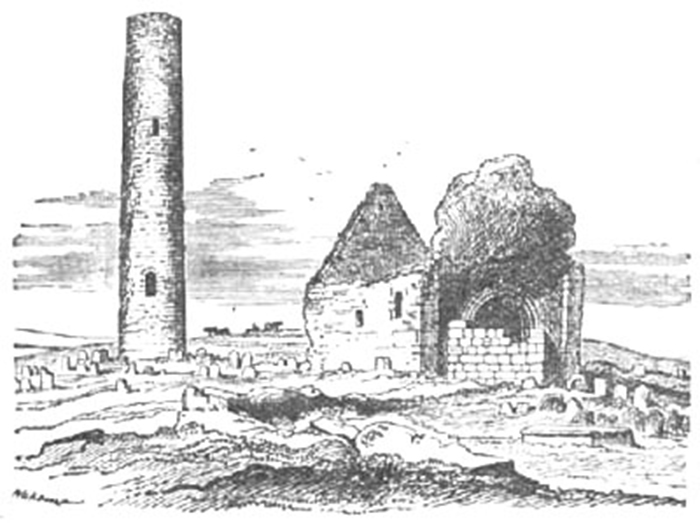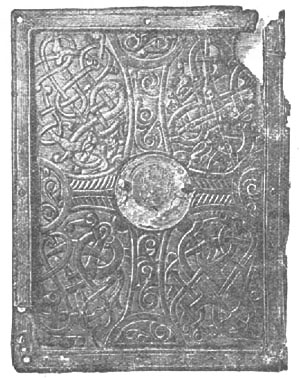Education and Industry in Ancient Ireland
From A Smaller Social History of Ancient Ireland 1906
« previous page | contents | start of chapter | next page »
CHAPTER I....continued
In all parts of the country were monasteries, most of them with schools attached, where an excellent education was to be had by all who desired it, for small payment, or for nothing at all if the student was poor; and besides these there were numerous lay schools where young persons might be educated in general learning and for the professions.
FIG. 3. Ruins on Inishcaltra or Holy Island in Lough Derg on the Shannon. Island Monastery founded by St. Camin (died 653). Here was one of the Munster Colleges where many distinguished men were educated. From the Kilkenny Archaeological Journal.
The teaching and lecturing were carried on with life and spirit, and very much in the open air when the weather permitted. In the monasteries and schools, as well as in some private houses, there were libraries of manuscript books containing all the learning then known: but when you walked into the library room, you saw no books on shelves; but numbers of neat satchels hanging on hooks round the walls, each containing one or more precious volumes and labelled on the outside.
Learning of every kind was held in the highest estimation; and learned men were well rewarded, not only in the universal respect paid to them, but also in the solid worldly advantages of wealth and influence. Professional men—physicians, lawyers, builders, &c.—went on their visits, each attended by a group of scholars who lived in his house and accompanied him to learn their profession by actual practice.
Some gave themselves up to the study and practice of art in its various forms, and became highly accomplished: and specimens of their artistic work remain to this day, which are admitted to be the most perfect and beautiful of the kind existing in any part of the world.
In numerous districts there were minerals, which, though not nearly so abundant as in the neighbouring island of Great Britain, were yet in sufficient quantity to give rise to many industries. The mines were worked too, as we know from ancient documents; and the remains of old mines of copper, coal, and other minerals, with many antique mining tools, have been discovered in recent times in some parts of Ireland. Gold was found in many places, especially in the district which is now called the county Wicklow; and the rich people wore a variety of gold ornaments, which they took great pride in. Many rivers produced the pearl mussel, so that Ireland was well known for its pearls, which were unusually large and of a very fine quality: and in some of the same rivers pearls are found to this day.
FIG. 4. Specimens of the Ancient Irish Art of Bookbinding. From Miss Stokes's Early Christian Art in Ireland.
Though there were no big factories, there were plenty of industries and trades in the homes of the people, like what we now call cottage industries.
Coined money was hardly known, so that all transactions of buying and selling were carried on by a sort of barter, values being estimated by certain well-known standards, such as cows, sacks of corn of a fixed size, ounces of gold and silver, and such like. To facilitate these interchanges, the people had balances and weights not very different from those now used.


